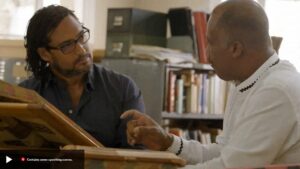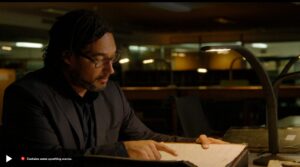Britain’s Forgotten Slave Owners
Category: Equality, History
This is a BBC Teach resource in which historian, David Olusoga, looks at the abolition of slavery in Britain.
Why British Slave Owners Opposed Abolition
Olusoga investigates the resistance to abolition of slavery among British slave owners, including the threat they perceived to the profitable sugar cane industry.
He deliberately contrasts William Wilberforce, leader of the abolitionists with George Hibbert, a slave owner who worshipped in the same church in Clapham.
Olusoga also refers to the family of the Victorian Prime Minister William Gladstone whose fortunes were based on sugar plantations in Guyana.
Click here or on the image below to access the video.
How British Slave Owners Fought For Compensation
Olusoga investigates how British slave owners fought for compensation as the government moved towards abolishing slavery within the Empire in 1832.
He outlines how abolitionists were forced to reluctantly accept that slaves were the legal property of their owners in order to get the legislation through Parliament.
This concession meant that 20 million pounds (around 17 billion pounds today) was set aside to be shared out among 46,000 claimants, awarded by a ten man Slavery Compensation Commission.
The slaves themselves received nothing.
Click here or on the image below to access the video.
The Barbados Slave Code
Olusoga investigates the spread of the Barbados Slave Code across British colonies during the eighteenth century and its social and economic impact.
He begins his narrative with the English settlement of Barbados in 1627 which resulted decades later in a lucrative sugar cane industry covering 40% of the island and cultivated by enslaved Africans.
The clip emphasises the harsh and racist provisions of the code and its role in creating a slave society and economy controlled by the use of severe violence.
Click here or on the image below to access the video.
British Slave Owners In The 1830s
Olusoga investigates evidence of British slave ownership in the 1830s, referring to 40,000 owners with over 800,000 slaves in the Caribbean and elsewhere.
The figures are from detailed records of compensation to slave owners paid when slavery was abolished in 1834 across the British Empire.
Olusoga uses the records to demonstrate how widespread and profitable the ownership of slaves was in Britain at the time, linking his analysis by visits to Georgian terraces in parts of London.
Click here or on the image below to access the video.
The Social & Economic Impact Of Slave Ownership
Olusoga investigates the impact of slave ownership on British society, including its social and economic consequences.
He traces how the wealth of returning slave owners in the mid-18th Century paid for monumental country estates and sometimes elevation to the British aristocracy.
To demonstrate his point, Olusoga tours Harewood House in Yorkshire and interviews the present Earl of Harewood about his 18th Century slave-owning ancestors.
Olusoga uses records of compensation to slave owners to claim that British national interests and those of slave owners were often aligned.
Click here or on the image below to access the video.








